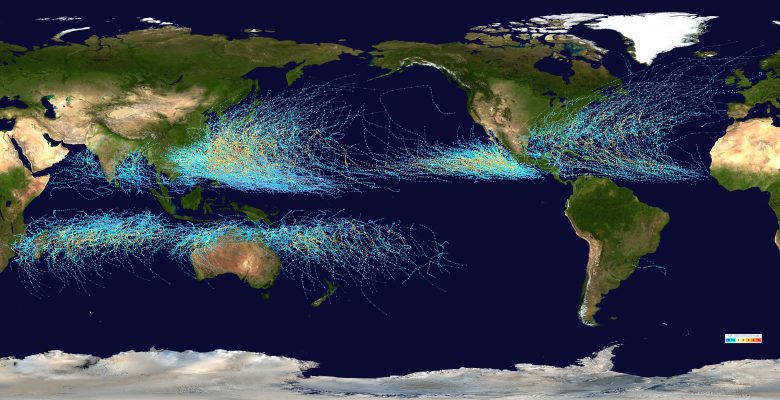Differences between North and South Hemispheres
Flat earthers point to the differences in climate in comparative locations north and south of the equator and suggest that these climatic differences between the north and south point to a non-symmetrical earth and therefore support the flat earth model.
They point to the differences in climate and life towards the north pole compared to towards the south pole. Of course these are dramatically different regions, even on the globe.
We do see dramatic climatic differences between locations on the same latitude, for example the climate in Australia is quite different to the climate in South America, even though both share the same area of latitude. So it would not be unreasonable to expect different climatic conditions at the north and south poles particularly considering there is a lot of land in the north but at the south there is only the open ocean and ice. So it is not unreasonable to expect different climates in radically different regions.
Conclusion: While these climatic differences may be interesting to investigate they do not prove the earth is flat and do not prove the earth is not symmetrical.
Supporting Flat Earth Proofs
- 50) If the Earth were truly a globe, the Arctic and Antarctic polar regions and areas of comparable latitude North and South of the equator should share similar conditions and characteristics such as comparable temperatures, seasonal changes, length of daylight, plant and animal life. In reality, however, the Arctic/Antarctic regions and areas of comparable latitude North/South of the equator differ greatly in many ways entirely inconsistent with the ball model and entirely consistent with the flat model.
- 49) If Earth were a spinning ball heated by a Sun 93 million miles away, it would be impossible to have simultaneously sweltering summers in Africa while just a few thousand miles away bone-chilling frozen Arctic/Antarctic winters experiencing little to no heat from the Sun whatsoever. If the heat from the Sun traveled 93,000,000 miles to the Sahara desert, it is absurd to assert that another 4,000 miles (0.00004%) further to Antarctica would completely negate such sweltering heat resulting in such drastic differences.
- 51) Antarctica is by far the coldest place on Earth with an average annual temperature of approximately -57 degrees Fahrenheit, and a record low of -135.8! The average annual temperature at the North Pole, however, is a comparatively warm 4 degrees. Throughout the year, temperatures in the Antarctic vary less than half the amount at comparable Arctic latitudes. The Northern Arctic region enjoys moderately warm summers and manageable winters, whereas the Southern Antarctic region never even warms enough to melt the perpetual snow and ice. On a tilting, wobbling, ball-Earth spinning uniformly around the Sun, Arctic and Antarctic temperatures and seasons should not vary so greatly.
- 52) Iceland at 65 degrees North latitude is home to 870 species of native plants and abundant various animal life. Compare this with the Isle of Georgia at just 54 degrees South latitude where there are only 18 species of native plants and animal life is almost non-existent. The same latitude as Canada or England in the North where dense forests of various tall trees abound, the infamous Captain Cook wrote of Georgia that he was unable to find a single shrub large enough to make a toothpick! Cook wrote, “Not a tree was to be seen. The lands which lie to the south are doomed by nature to perpetual frigidness – never to feel the warmth of the sun’s rays; whose horrible and savage aspect I have not words to describe. Even marine life is sparse in certain tracts of vast extent, and the sea-bird is seldom observed flying over such lonely wastes. The contrasts between the limits of organic life in Arctic and Antarctic zones is very remarkable and significant.”
- 53) At places of comparable latitude North and South, the Sun behaves very differently than it would on a spinning ball Earth but precisely how it should on a flat Earth. For example, the longest summer days North of the equator are much longer than those South of the equator, and the shortest winter days North of the equator are much shorter than the shortest South of the equator. This is inexplicable on a uniformly spinning, wobbling ball Earth but fits exactly on the flat model with the Sun traveling circles over and around the Earth from Tropic to Tropic.
- 54) At places of comparable latitude North and South, dawn and dusk happen very differently than they would on a spinning ball, but precisely how they should on a flat Earth. In the North dawn and dusk come slowly and last far longer than in the South where they come and go very quickly. Certain places in the North twilight can last for over an hour while at comparable Southern latitudes within a few minutes the sunlight completely disappears. This is inexplicable on a uniformly spinning, wobbling ball Earth but is exactly what is expected on a flat Earth with the Sun traveling faster, wider circles over the South and slower, narrower circles over the North.
- 55) If the Sun circles over and around the Earth every 24 hours, steadily travelling from Tropic to Tropic every 6 months, it follows that the Northern, central region would annually receive far more heat and sunlight than the Southern circumferential region. Since the Sun must sweep over the larger Southern region in the same 24 hours it has to pass over the smaller Northern region, its passage must necessarily be proportionally faster as well. This perfectly explains the differences in Arctic/Antarctic temperatures, seasons, length of daylight, plant and animal life; this is why the Antarctic morning dawn and evening twilight are very abrupt compared with the North; and this explains why many midsummer Arctic nights the Sun does not set at all!
